Today’s article comes to us from, Christopher Bailey, who is particularly interested in finding information and photos of these kinds of antitank weapons. He is especially interested in high-quality photos, both period and modern. If you have access to that type of information, please let us know and we will put you in contact with him.
九七式自動砲: The Japanese Type 97 20mm Anti-tank Rifle
by Christopher Bailey
In the middle part of the 1930’s, it became apparent to nearly all observers that another war was on the horizon. Recalling the lessons of the First World War, nations around the world each began their own program to design and perfect a man-portable anti-tank weapon. The most obvious solution at the time, and the one that most designers chose as their starting point, was the World War One German concept of an “anti-tank rifle”. The first such gun, the Mauser 1918 Mauser T-Gewehr, was itself simply a scaled up Model 98 rifle. Chambered for a newly developed 13mm round, the T-Gewehr was a capable and effective battlefield rifle, and further development of this line of weapons was a reasonable solution at the time.
From this prewar “arms race” came a number of competing designs, amongst them the Polish Wz-35, the German PzB 38, the British Boys Rifle as well as the Solothurn series of commercial guns. These rifles, all using different mechanisms, show off a variety of design compromises. Some used a small high-velocity bullet fired out of a light weight gun, while others used a large projectile fired out of an equally heavy weapon. The middle ground (that of a medium sized round) was also employed, though it was largely overlooked by most designers Not to be left behind by these European developments, the Empire of Japan began its own program in 1935, culminating in 1937 with the adoption of the Type 97 Anti-tank rifle.
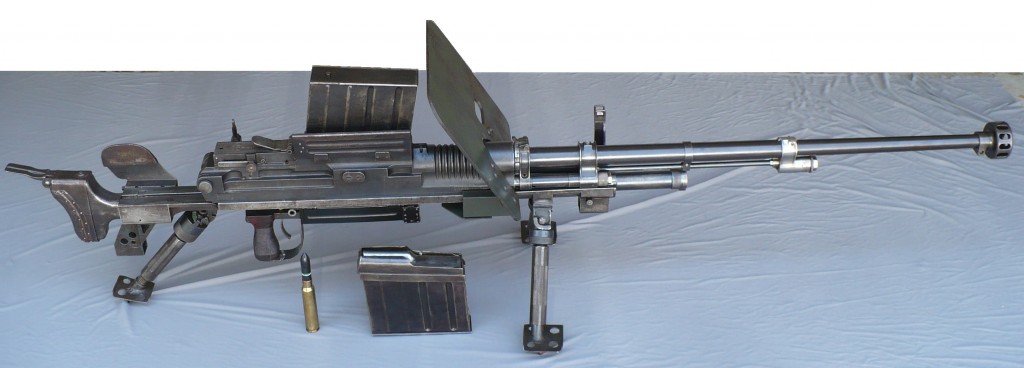
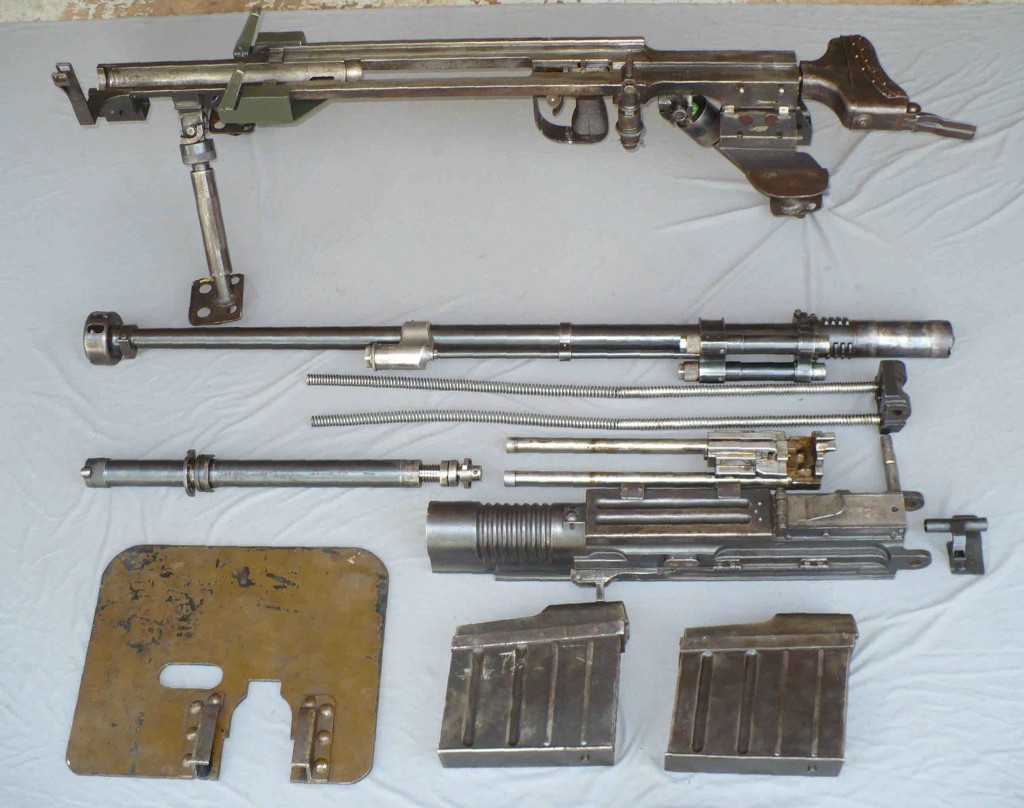
Chambered for the powerful 20x124mm cartridge, the Type 97 is a magazine fed, gas-operated weapon that fires from an open bolt. More like a small artillery piece than a traditional self-loading rifle, the whole receiver and barrel assembly of the Type 97 actually slides front-to-back during firing. While designed only for semiautomatic fire, there are reports of guns firing fully automatic. These seem to be either mechanical malfunctions or simply accounts of the Type 98, a fully automatic machine cannon derived from the Type 97.
When fully assembled with its armor shield and carrying handles, the gun weighed in at an astonishing 150 pounds. Unlike other heavy designs that came equipped with wheeled mounts or skis, the Type 97 was carried by its crew much like an injured man on a stretcher. This heft, coupled with the guns accessories and ammunition would have certainly place a large burden on the nine man crew during cross country operations. The barrel, which could be removed for long distance transport, was locked to the receiver using an interrupted thread mechanism.
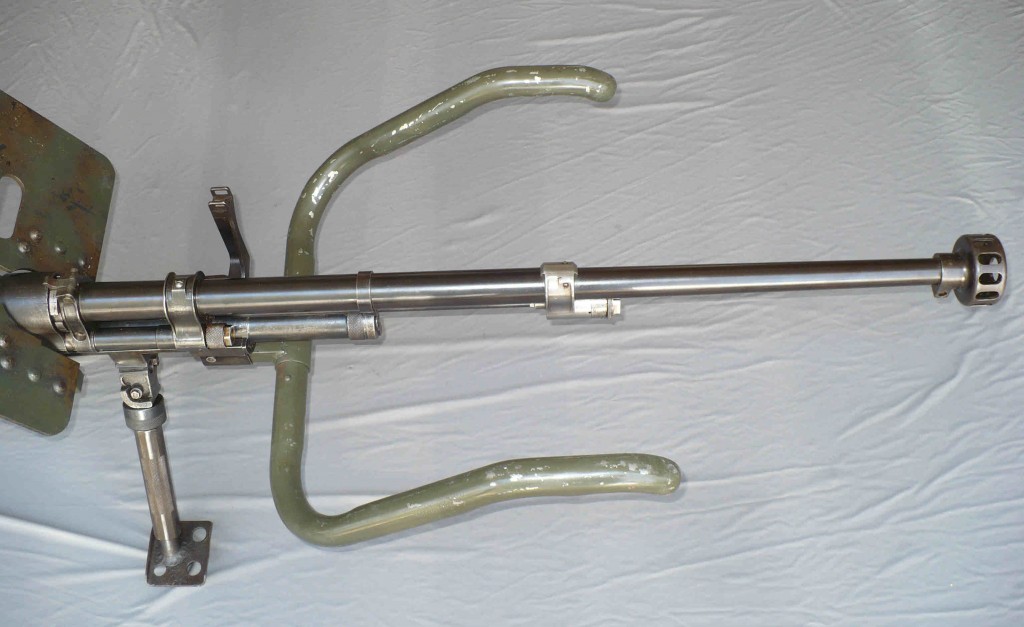
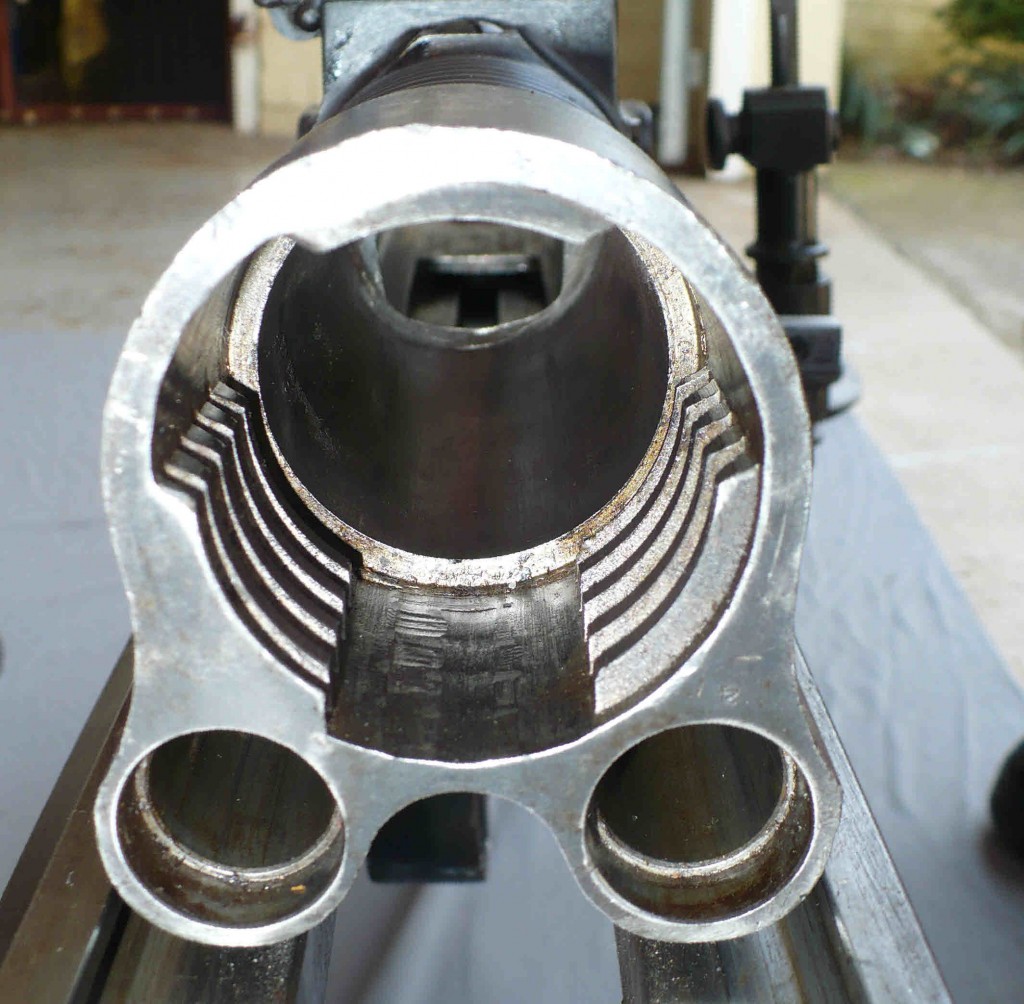
Once the gun had been carried to its destination, the crew would adjust the three legs and lower the weapon into its firing position. To cock the weapon, the charging handle located on the left side would have to be pulled fully to the rear, with a loud “click” letting the shooter know that the sear had engaged the bolt carrier. After ensuring that both dust covers were open, a loaded magazine would then be locked into place on the top of the gun. At this point, the gun was ready to fire.
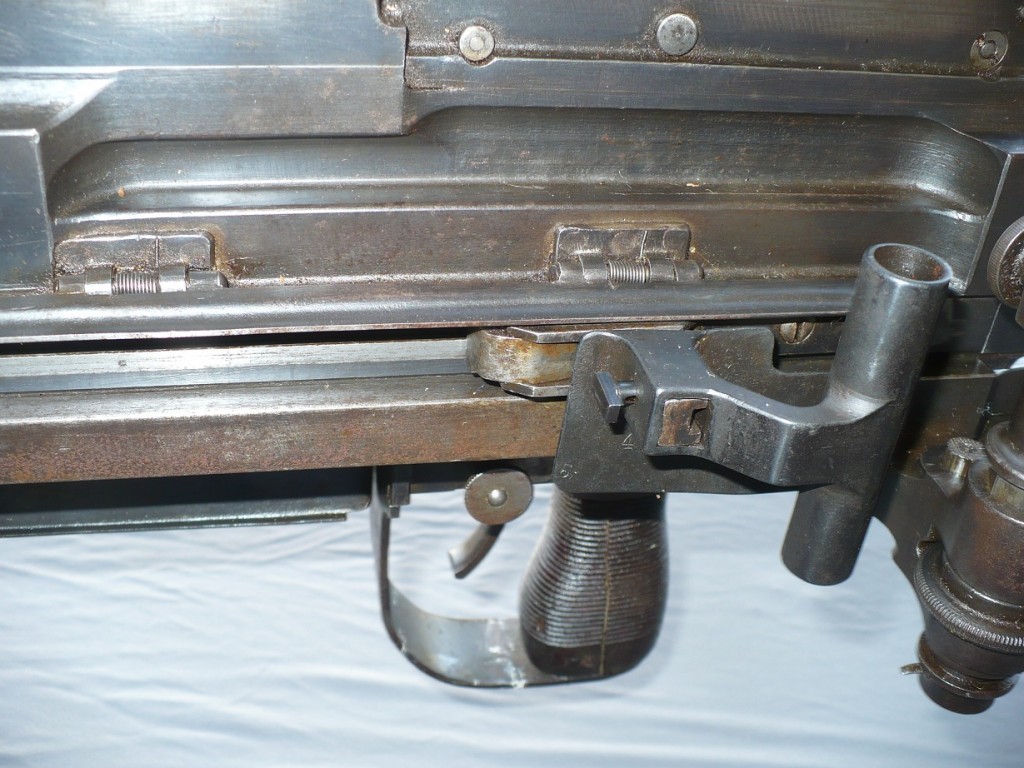
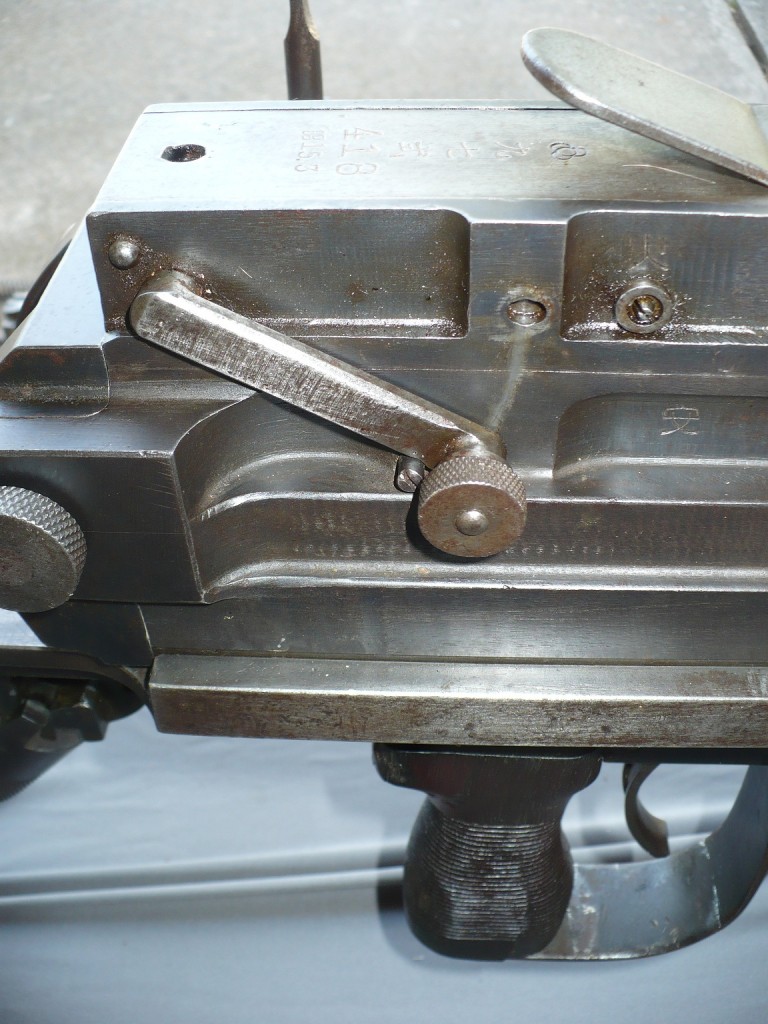

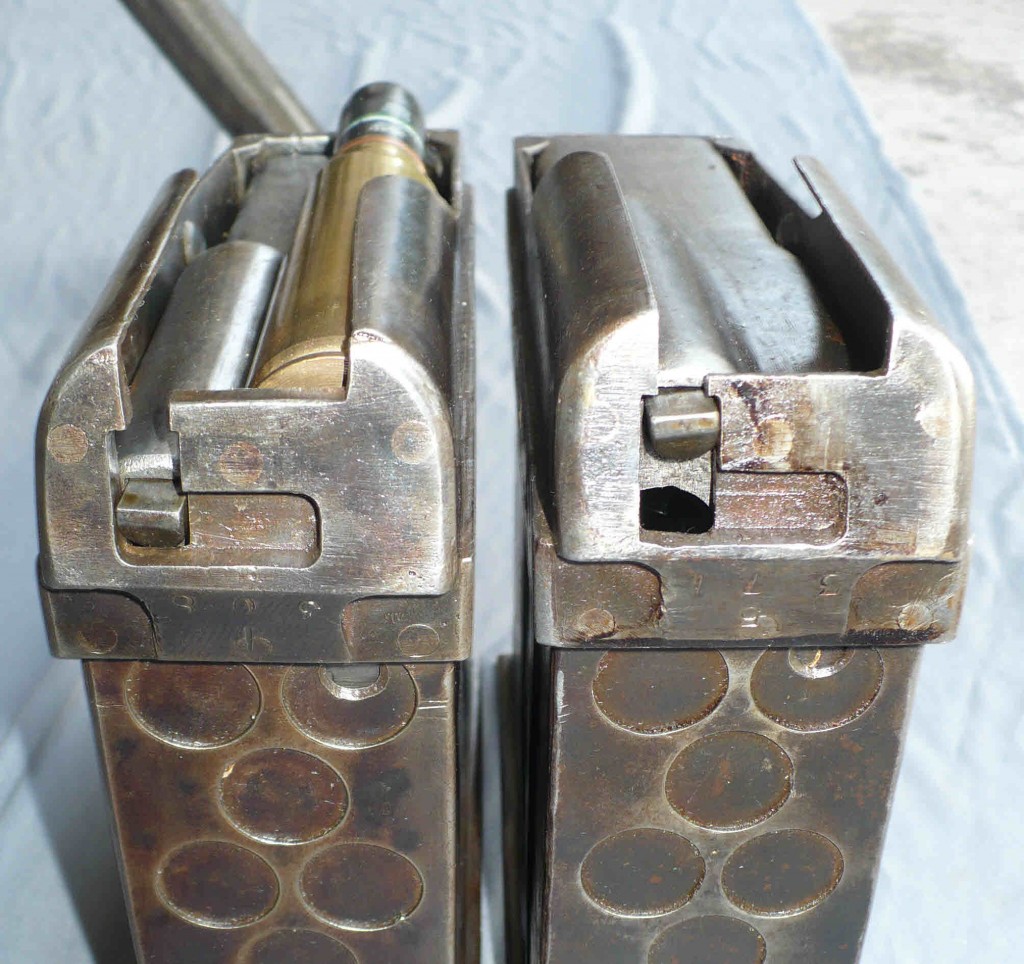
After loading the weapon, the gunner would lay the gun on his target. This was accomplished using a rear peep sight and a blade front sight. Traversing the gun was actually somewhat difficult, requiring the gunner to lift the rear of the heavy gun with his shoulder before shifting it left or right. Elevation could be adjusted in the similar manner, or by raising and lowering the rear monopod leg via its knurled grip. An assistant gunner would grip both forward legs to steady the gun during the firing, a position that must have been unnerving to those so assigned.
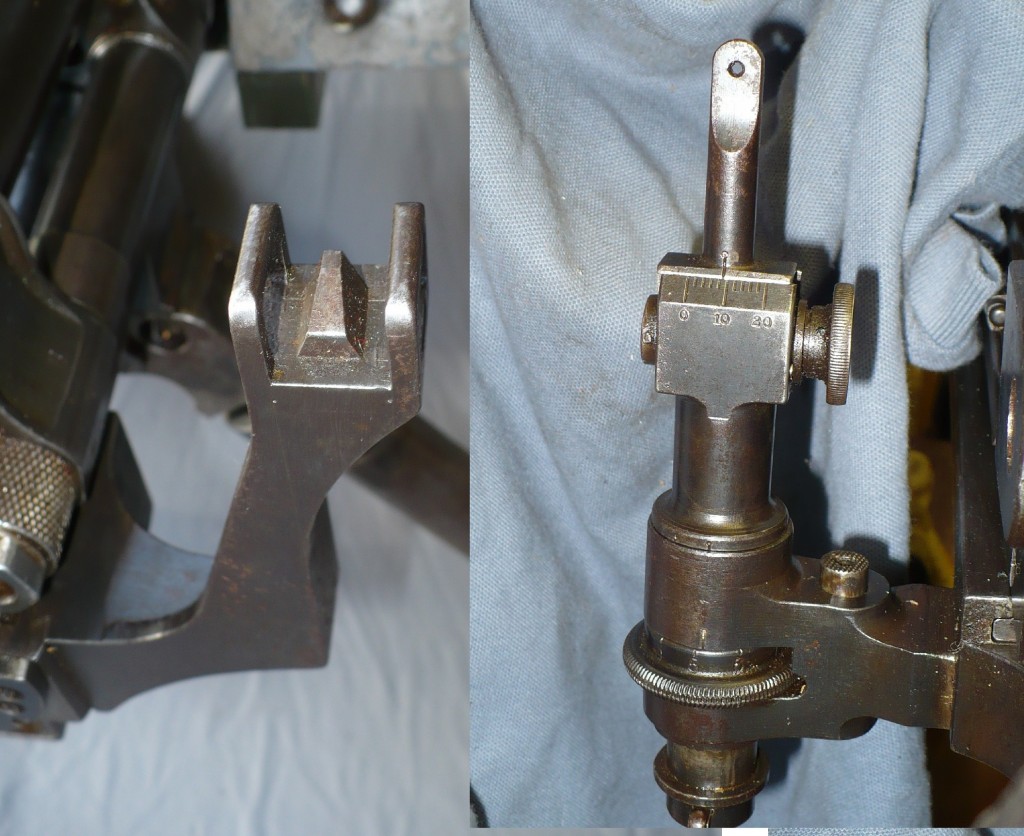
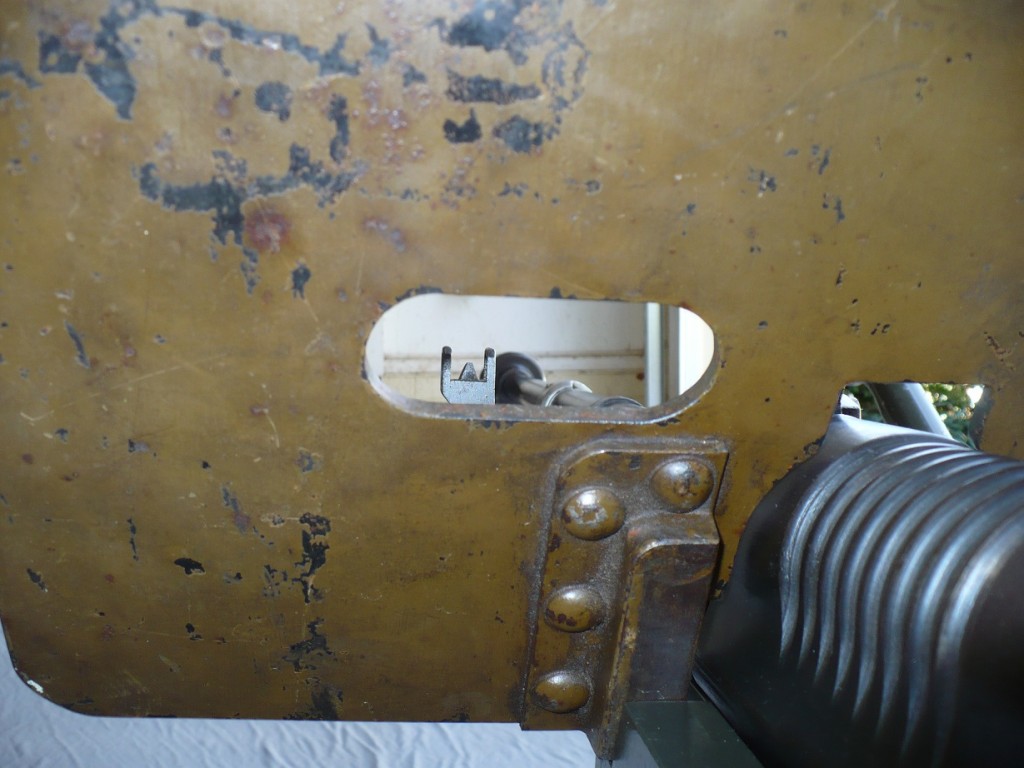
Once the gun had been appropriately sighted, the trigger would be pulled firmly to the rear, releasing the bolt carrier assembly. Driven forward by spring pressure, the bolt would strip a round from the magazine, feeding it into the chamber. The bolt carrier, continuing forward, would lock the action by forcing a locking piece into cutouts located in the sides of the receiver. Once fully locked, the firing pin would be struck be the carrier assembly, firing the cartridge.
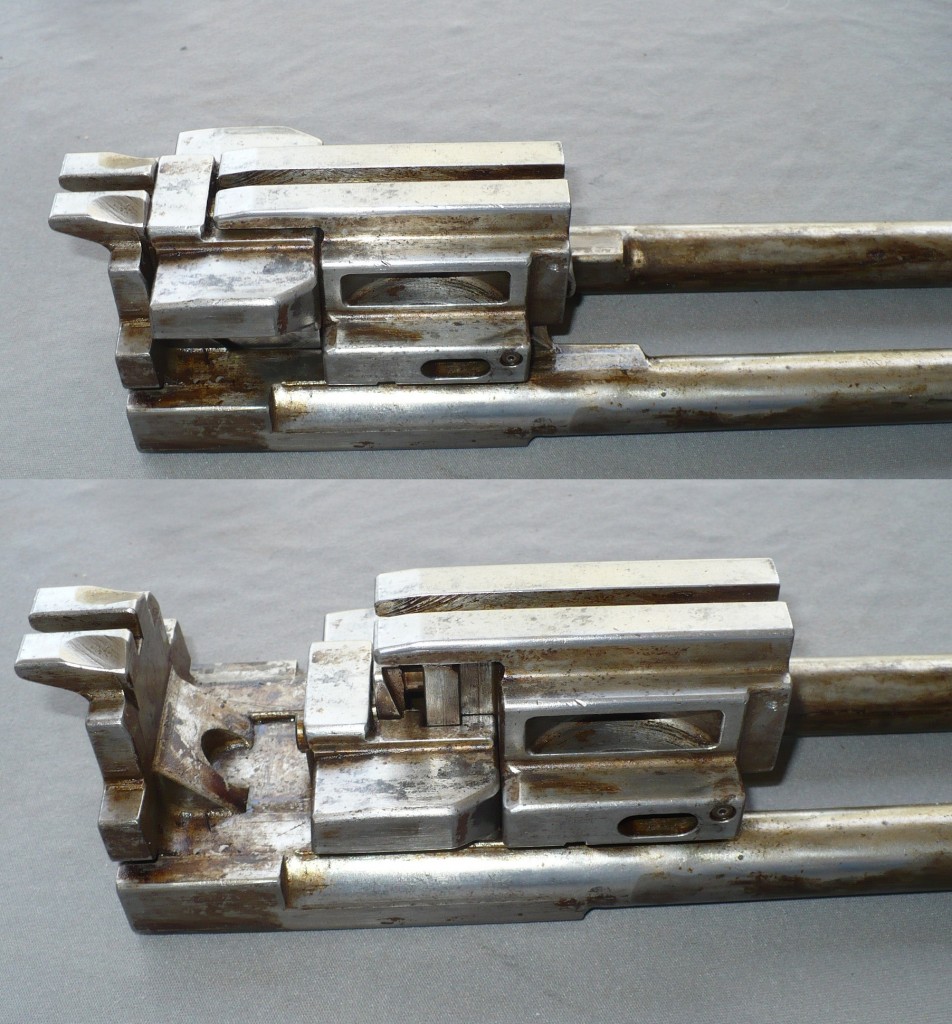
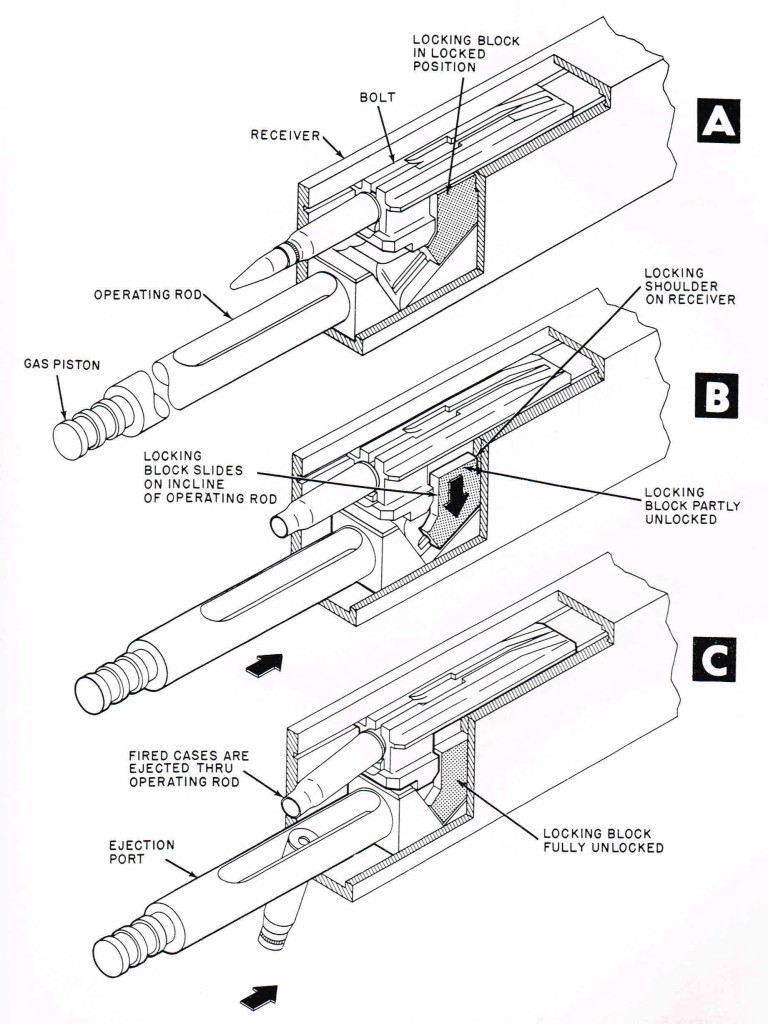
As the projectile traveled down the barrel at 2,640 feet per second, some of the propellant gas was diverted into a regulated gas tube assembly located underneath the barrel. The gas acted directly against two integral gas pistons on the bolt carrier, forcing the bolt assembly to the rear and unlocking the gun’s action. The fired case was then extracted by the bolt and thrown out the bottom of the gun by an ejector mounted in the top of the receiver housing. Once fully to the rear, the sear would again catch on the bolt carrier, locking the action open until the trigger was pulled once more. Simultaneous to this internal action, the whole barreled action would cycle both forward and to the rear, its movement being slowed by the recuperator system mounted in the lower receiver. This additional complexity served to somewhat soften the recoil experienced by the shooter.
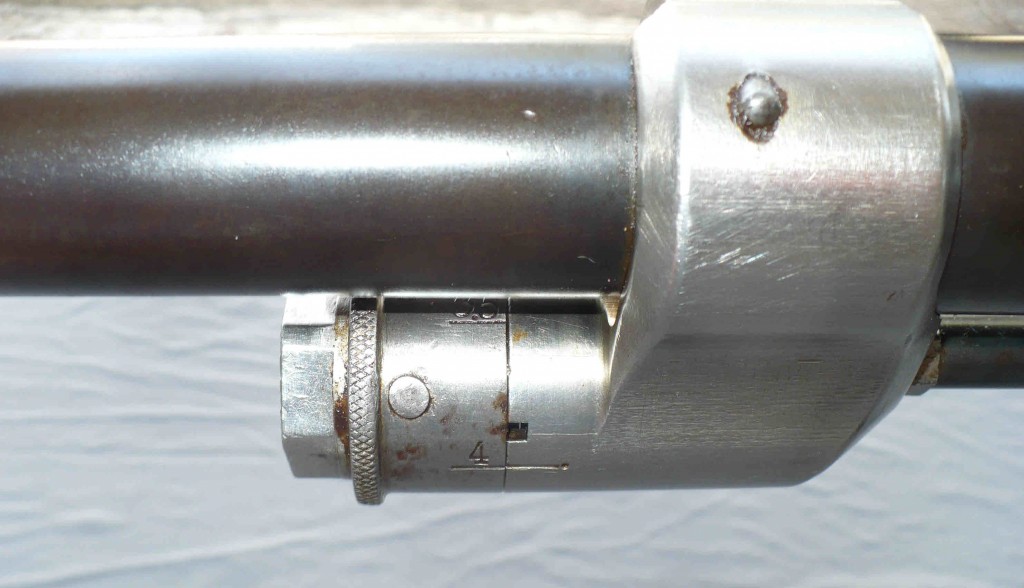
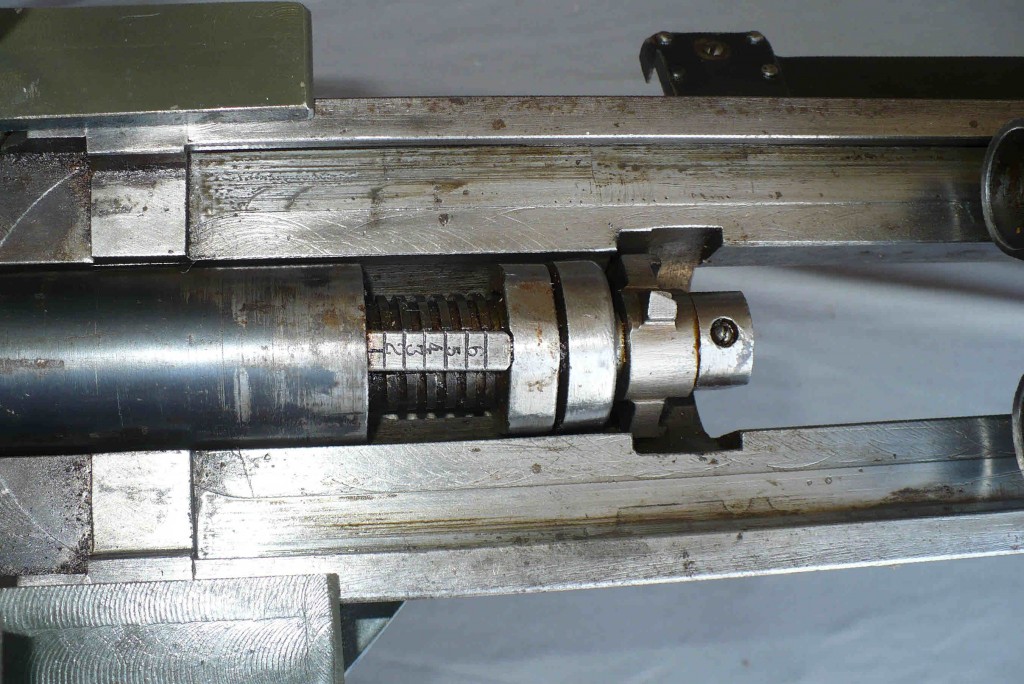
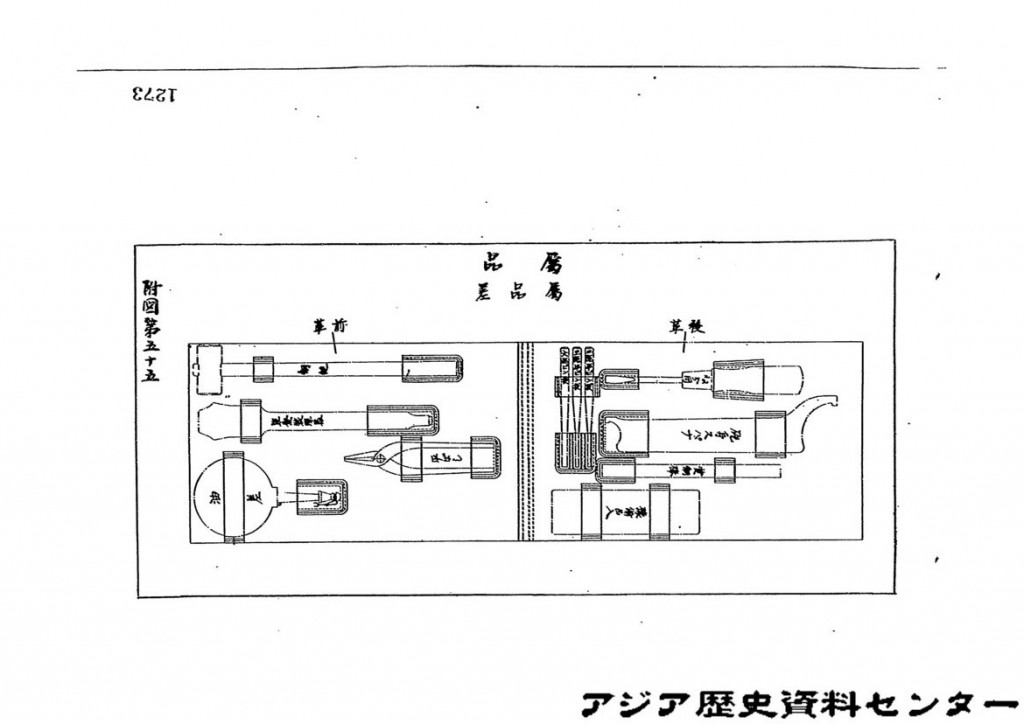
Production of the gun began in 1938 at the Kokura Arsenal, a facility best known for its small arms production throughout the Second World War. First seeing combat against the Red Army at the Battles of Khalkhin Gol in 1939, the Type 97 proved to be a disappointment to the Japanese military, with its 20mm round performing poorly against Soviet BT series tanks. This is somewhat surprising given the fact that wartime American testing demonstrated that the projectile could pierce about 30mm of armor at 250 meters range.
When one also considers the complexity of the gun and the difficulty of manufacture, it isn’t surprising that production of the gun was terminated in 1941 after some 1100 had been completed. As the war turned against Japan in 1943, the Nihon Seikosho Company (Japanese Steel Works) tooled up and produced another 100 guns, after which no more were made. Despite its limitations, the Type 97 continued to be a front line weapon throughout the war in the Pacific, usually being employed in a prepared static defense position. Very few examples of the gun survive today in either private hands or museums, almost certainly due to its bulk and great weight.
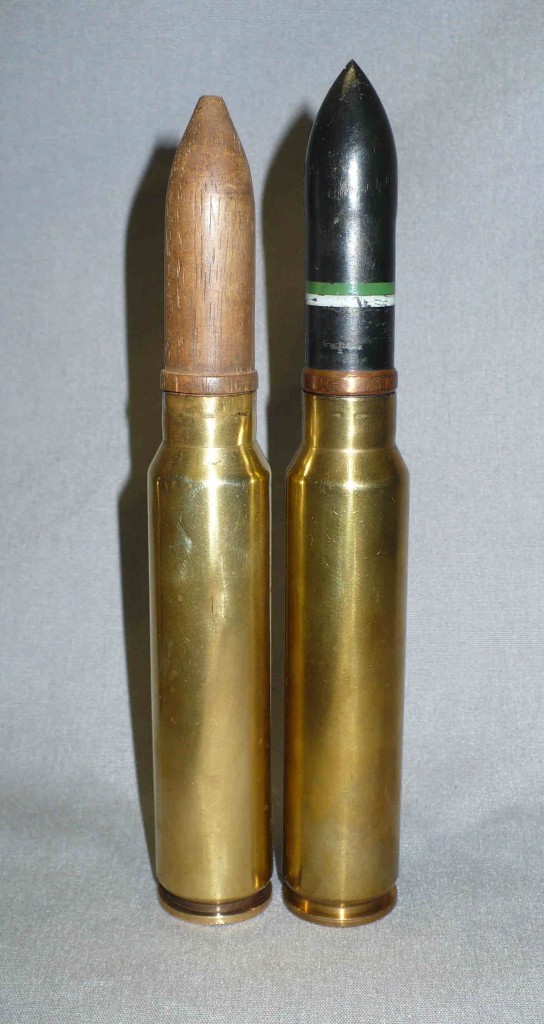
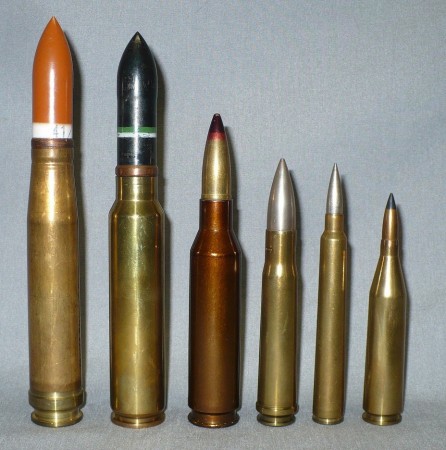
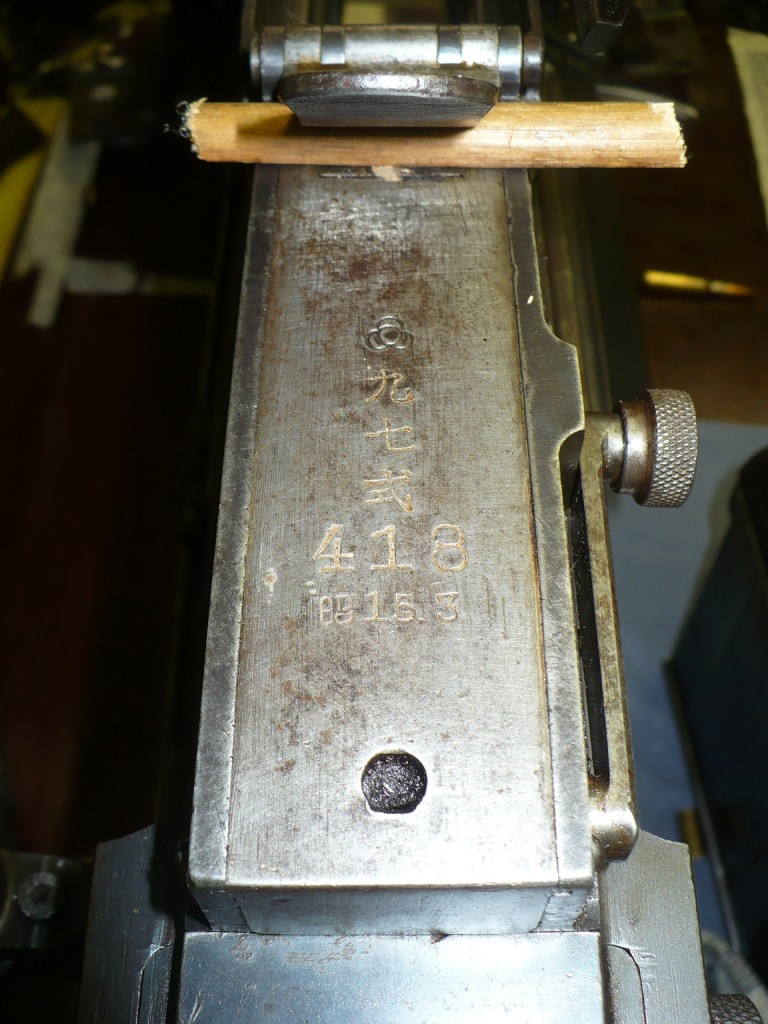
Technical Specs
Caliber: 20 x 124mm
Mechanism: Gas-operated open-bolt semiautomatic
Length, firing position: 82.5 in (2096 mm)
Length, traveling position: 99.5 in (2527 mm)
Weight, complete: 150 lb (68.1 kg)
Weight, less shield and handles: 115 lb (52.2 kg)
Barrel length: 41.875 in (1064 mm)
Rifling: 8 groove
Magazine capacity: Seven rounds
Muzzle velocity: 2,640 feet per second (866 m/s)
Total production: Approximately 1200

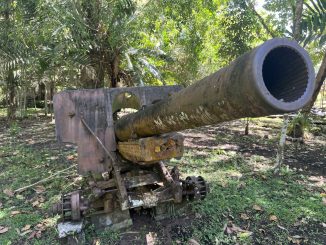
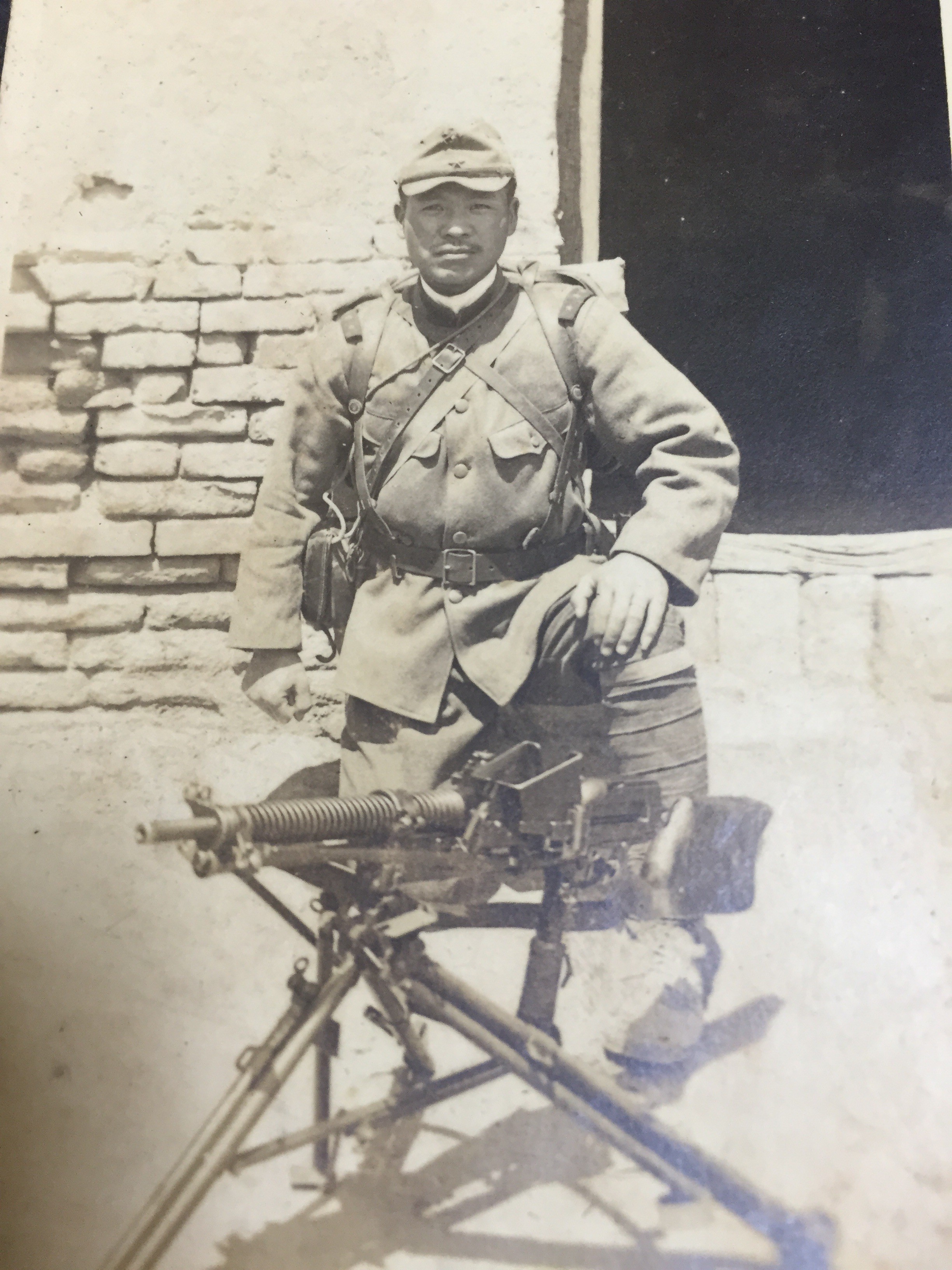

Fantastic article. I shudder to imagine having to cock that brute!
No mechanical advantage? Yikes!!!
A GI would “kimchi rig” an add-on to gain a mechanical advantage. Better armorers would machine one.
I suspect that most of the Japanese troops who used this gun never lived long enough to say what they did in so far as actual field usage goes.
Many thanks,
I really appreciate learning about these monsters, and the big end of what one man can aim and fire, and have to admit that I don’t have much background knowledge of the cannon sized anti tank rifles.
As Christopher Bailey states, they’re probably a bit to big and heavy for most museums and most collectors.
As examples of the gun designers and machinists art, they’re treasures – even though (or especially because) they were such a failure in their intended purpose.
A cheap tin or fibreglass tube and a tin covered shaped charge projectile was so much more effective as a man portable anti tank weapon even if it did mean you couldn’t repair and re use the tanks you captured.
I’ve read (Small Arms Review?) that recoil was an absolute BEAR.
Anyone interested in Japanese anti-tank operations against a modern army should read Coox’s “Nomonhan”. I don’t believe that he mentions this gun. He mostly talks about Japanese “human bullet” squads equipped with Molotov cocktails taking on Zhukov’s armored forces. The controlling metaphor for the Japanese approach to the conflict was the hydrogen filled observation balloon which the Japanese employed… with predictable results.
More I read parts of history of Sino-Japanese and later US-Japanese conflict, I have more and more appreciation of capability of Japanese Imperial soldiers. They were true fighting machines; it is probably no exaggeration to say that in their form was reached limit of potential in modern combat.
The Japanese problem was a militant unwillingness to face unpleasant reality.
The Japanese plan in New Guinea REQUIRED there to be a road over the Owen Stanley mountains… so they ASSUMED that there was one. Nothing that could dignify the term “road” actually existed.
During the Battle of Nomonhan, the Japanese logistical system was so ludicrously dire that where the Soviets could literally drown them in artillery fire, the Japanese were reduced to RATIONING shells.
Unlike the officers of the Imperial Japanese Navy, most of the army officers hadn’t traveled beyond Korea, Manchuria or China. Many of them had a picture of the world informed by an obscurantist fanaticism of a kind with Al Qaeda’s.
In the end, the Japanese fighting man was failed by his leadership even more badly than had the French and British fighting man been failed by their leadership in WWI.
Good points, Chris, especially about the Japanese High Command’s assumptions concerning a non-existent road over the Owen Stanley Range. As Australian war correspondent Osmar White, a thoroughgoing realist if ever there was one, commented in his book “Green Armour” ( Corgi Books, 1975 ), the Japanese advance over the Owen-Stanleys during the New Guinea Campaign failed not because of some great heroic defence as touted by Allied propaganda of the time, but because the geography and environment of New Guinea itself effectively sapped that advance. By the time the lead elements actually came up against the meager Allied defences, they were so worn out and reduced in numbers that they could not mount any sort of real offensive. Along with famed fellow war correspondent Chester Wilmot and combat photographer Damien Parer, White lived and suffered with the Australian troops, sharing their every hardship and sometimes assuming a leadership role when the acute shortage of trained officers and NCO’s dictated that he do so. He was therefore in an eminent position to understand the true situation in the front lines and comment on it, and his first-hand accounts reflect this.
A college tutor I studied under had lived in PNG for a number of years.
I don’t think any of the highlands between Australia and continental Asia can be described as “dry”, but the mountains of New Guinea take that to an extreme.
At some of the mines in the highlands, dawn is beautifully clear, with sparkling glaciers and snow covered peaks above a sea of cloud.
Some time in the afternoon, that cloud rises up to the mine level and the rain starts, and continues on well into the night. An average of almost 2 inches falls every day of the year – fifty feet of rainfall a year.
Of course from time to time, the pacific is capable of dumping more than 2″ a day on its islands. Figures I saw for one of the typhoons which hit Taiwan after its last big earthquake, were of over ten feet of rainfall in 72 hours in the mountains.
This is definitely welcome addition to scope of armaments presented at FW! To me, while one time or other touched on the subject, is existence of this particular design quite surprising.
Should the projectile have been with tungsten/wolfram core, it might have had more success even against tanks (at their weak spots). The German Panzerbuchse 41(2.8cm) was more than twice the weight, but according to what record shows, it was quite successful. It took use of combination of squeeze-bore technology with tungsten core. Muzzle velocity was phenomenal – up to 1,400m/s. That could probably put even Sherman tank on notice. In reality there were plenty of other valuable armoured targets to engage so this gun should have been real asset.
Denny, you have a very good point, the utility of a cannon goes way beyond its ability (or lack of ability) to penetrate a tank.
You’ve reminded me of what was in some of Peter Kekkenon’s writings, where he described some of the uses which the Finns found for the 20mm Lahti cannon, in the three wars they fought within WWii.
Even if the brute couldn’t be relied upon to penetrate a tank’s armour, well aimed shots could break a track pin, or damage a sprocket, then with the tank either stationary or slewing in circles, further shots could stake the turret from rotating and stake the gun from elevating. I think at the end of the Winter War, the Finns almost had more Soviet tanks than the soviets had.
“Christmas tree” mounts allowed the selective fire versions to become effective anti aircraft guns, even against ground attack planes equiped with armor plate intended to protect against small arms fire
Incendiary rounds with the fuses fiddled with to increase sensitivity were used to start forest and heathland fires behind the Soviet forces, silhouetting them.
Yes, there are certainly ‘creative ways’ in use of small cannon, so much so today. As the technology of sights on tanks pogressed, so they are more vulnerable to well placed shots. Recalling what the ex-soviet officer told me: “tank without sights is just a tractor”.
Tank without track…50 ton door-stop.
Tank without gun…50 ton portable radio.
The first anti-tank rifle was the british Godsal.
The Type 97 was a solidly-built gun that was over-engineered in anticipation of its intended role, hence the weight. While the designers may have gone much too far in that direction, thus making it excessively unwieldy in the field, at least they tried to err on the side of reliability and mechanical integrity. The photographs of the Type 97 in its field-stripped condition seem to clearly bear this out.
As for the advantage of a bazooka type weapon of this gun – the effective range of a bazooka was up to 150 yards, this probably could take out a half track or similar lightly armored vehicle at 4 times the range, making its use less of a suicide mission.
The illustration of the GI tool kit (pg “1273”) was printed facing towards the outward edge of the page, so the photo shows the text and contents upsidedown. Beats me what it says though, most of it is Kanji.
Thanks for this info. I had no idea.
RE : Keith’s reply dated May 1, 2013 / 3:32 p.m.
Well said, Keith! In past times, I have lived and worked in similar conditions and understand perfectly what it entails. Most people — through no fault of their own, I might add — will have a hard time imagining what it takes to function efficiently under such circumstances. A combination of endurance, good bushcraft and complete wholistic adaptation to the environment is needed. Before I forget, Osmar White stated quite succinctly that jungle toughness was not so much a matter of muscle toughness ( how physically fit and well-trained you were ), but instead primarily a condition of mind paired with a bloodstream full of antibodies. The same holds true today.
So it fires from an open bolt? Why’s that? Wouldn’t have thought there’d be too much chance of a cook off in this style of weapon.
And all that mass moving forward when you pull the trigger couldn’t do your aim much good.
I would think they tried to use any and all means how to reduce recoil force. It may sound bit couterproductive vis-a-vis with what you are saying, but I cannot find other interpretation for that.
I also think the open-bolt idea for was recoil reduction. This, coupled with the forward movement of the barreled action would’ve reduced the felt recoil a fair amount. I believe the gun would be pretty comfortable to shoot.
Regarding point of aim: I do think the open bolt coupled with the bulk of the gun would’ve made it hard to aim at a moving target. While there are plenty of open bolt guns in military service, most of them are fully automatic, unlike the Type 97. Shooting at a moving target with great precision would’ve been tough.
Since a rear-mounted mono-pod is used and due to the fact that the thing weighs 150 pounds, I think the only time the gun is going to move is under recoil from the fired round.
Valid point!
The other members of the semi auto and selective fire light cannon anti tank “rifles” also propelled various heavy bits forward prior to firing, in order to spread the recoil impulse ove a longer period, and to minimise the shock when the recoiling parts hit the buffer(and the firer) at the end of their rearward travel.
The Solothern (20mm) propelled the barrel and action forward when the trigger was released, recoil first had to slow and stop them, before making them travel back.
The Oerlikon SSG series (also 20mm but only about half the muzzle energy of the Solothern and Lahti) fired from an open bolt and used advance primer ignition, with the bolt continuing forward into the chamber for about an inch after the primer was hit, before chamber pressure slowed and reversed it.
In each case, the mount and firer got almost half of the recoil before the round even fired, and slightly more than half after it fired – this spread the recoil over a far longer time period, making it a more bearable shove, rather than if it were all to come as one big, tooth loosening kick straight after firing.
I dream owning an a/t gun someday. This one seems a bit big and clunky, but I love how it’s put together. Open bolt’s just plain weird, though. Still, Japanese arms are highly underrated in many circles. I’m glad this isn’t one of them.
Great photos, thanks Ian.
Just wondering why the Type 97 is never compared to the Finnish Lahti L-39 anti tank rifle. They’re very similar in some regards.
There is page in existence on this sort of devices: http://www.antitank.co.uk/
It goes quite a bit into depth. As far as comparison between the two, they seem to be similar in many parameters although Finnish gun is little lighter and fires 20mm shot at slightly lover velocity. Still formidable gun though.
九七式自動砲: translation model 97 self operating system
Friends,
Please look at for further pertinent comments.
Q
The system stripped away the URL.
I will try posting again.
http://forums.gunboards.com/showthread.php?314689-Article-on-Type-97-20mm-Anti-tank-Rifle
Thank you for a really informative link! I learned a lot just by reading the accounts and comments. I also had not realized that Chris Bailey was “Nirvana” until now. Thanks so much for your contributions, Chris!
One of these was captured by the New Zealand Divison in the Soloman Islands in one of the battles from August to November 1943. It was on display at the Auckland Memorial War Museum for many years.
It is a very impressive weapon and gives the impression of being overly engineered. Interestingly there was also Soviet PTRS and PTRD anti tank rifles, both of which I lusted over for many years.
“More like a small artillery piece than a traditional self-loading rifle…”
Why, of course – since the weapon’s name actually translates to “Type 97 Automatic Cannon” (九七式自動砲), I’d say that’s an apt description.
Would like to have some good pictures of the Solothurn AT Rifles?
Yes, I would.
An impressive article, well done!
I do have a comment on the “automatic” feature. From my own research into this, there is no doubt that the AT gun was designed to be semi-auto only. I agree with your suggestion that the common belief that it could be fired automatically may have arisen because of a sear failure when a worn or faulty gun was tried in the US (I heard this story a long time ago).
There is, however, another potential reason for this misunderstanding: the Type 97 was later modified to act as an aircraft gun, which involved automatic firing as well as bigger magazines and other changes. Two different versions, for flexible and fixed mountings, were officially known as the Ho-1 and Ho-3, but apparently these initially kept the Type 97 designation. So, not surprising that there was confusion about this!
I see you don’t monetize your site, don’t waste your traffic,
you can earn additional cash every month because you’ve got hi quality content.
If you want to know how to make extra bucks, search for: Ercannou’s essential tools best adsense alternative
I have checked your page and i’ve found some duplicate content,
that’s why you don’t rank high in google, but there is a
tool that can help you to create 100% unique articles, search for; boorfe’s tips unlimited content
This website was… how do I say it? Relevant!!
Finally I’ve found something that helped me. Thank you!
Very quickly this website will be famous amid all blogging viewers, due
to it’s good articles or reviews
Hello, all is going sound here and ofcourse every one is sharing facts,
that’s really fine, keep up writing.
You tube Mark Felton Productions April 7,2020 “Paratroop Kamikazes-Leyte 1944 at 8:14-8:15 has the Japanese type 97 20mm automatic cannon anti tank rifle being carried by paratroopers.
This Anti-Tank Rifle from Japan is a heavy and Gives the same wound as Finnish Lahti L-39.